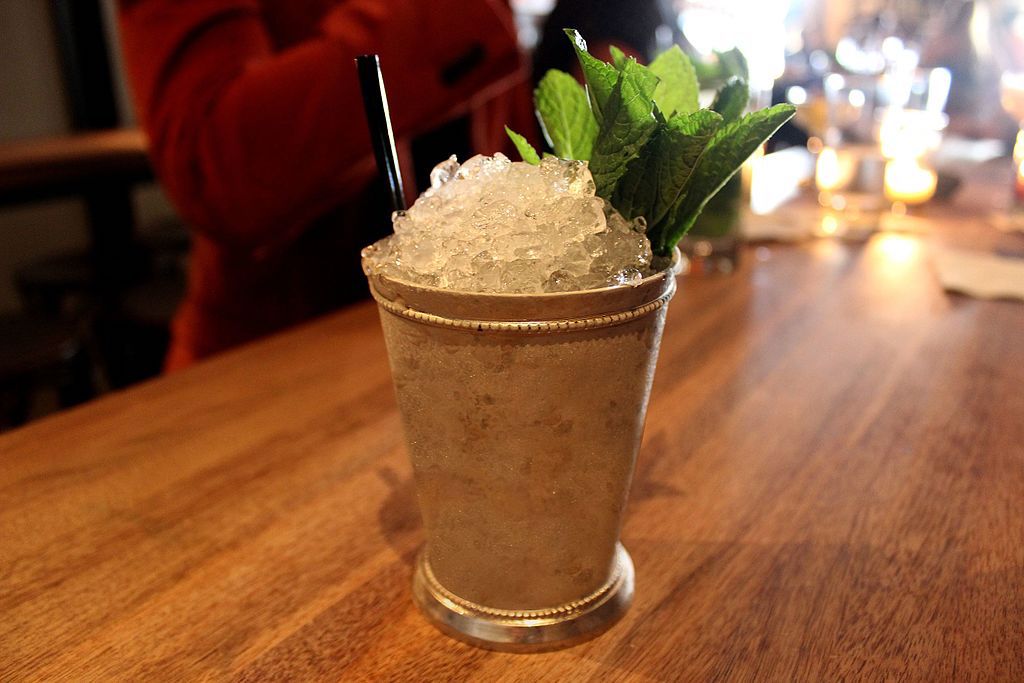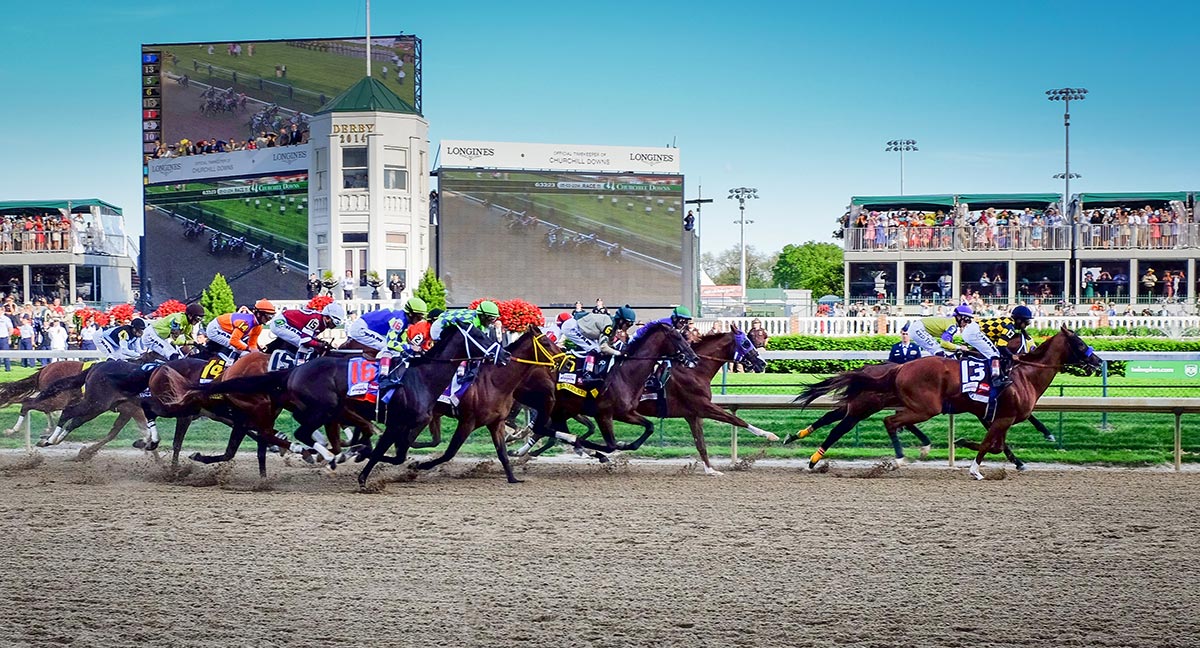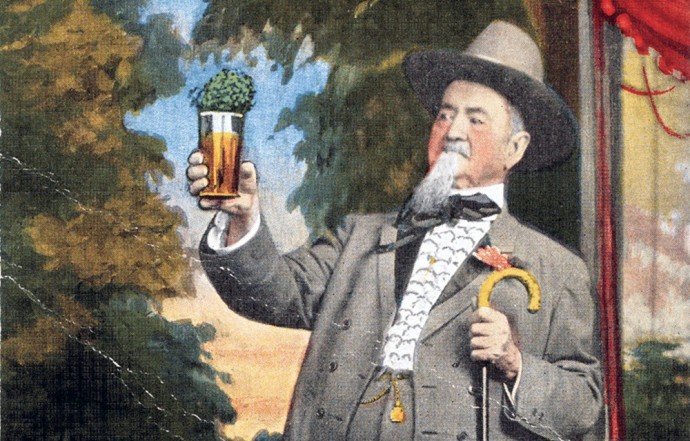Just because classic cocktail recipes like the Old-Fashioned can trace their roots back to the earliest uses of the word “cocktail” doesn’t mean they were the first mixed drinks—for decades and centuries beforehand, people had been getting just as creative with their libations. One of those venerable old drinks, the Mint Julep, would eventually become a classic of the American South. Originating as little more than a spoonful of sugar to make the medicine go down, the julep went on to inspire a wealth of poetic musings, cultural traditions, and delicious variations, and every year around Kentucky Derby day we like to reminisce about what has made this such a storied cocktail over the centuries.
The Ancient Origins of the Mint Julep
While the Mint Julep as we know it probably didn’t show up until at least the 18th century, the word “julep” and its ancestors have been around since ancient times. The earliest relative is gulab, a Persian word meaning “rose water.” This went through various iterations in several different languages: the Arabic julab, the Latin julapium, Spanish julepe, and the French julep, though not necessarily in that order.
All of these referred to a type of sweet alcoholic cordial that was used to make medicine more palatable, and by the 1400s the word had made its way into the English language. Apparently the drink was often prescribed as a treatment for nausea, vomiting, and difficulty swallowing, a fact that may seem ironic to over-imbibers.
An American Tradition

A Mint Julep served in a classic pewter cup at Rye in San Francisco.
Gradually, the medicinal julep gave way to recipes that were more conducive to a good time than to good health. Gary “Gaz” Regan postulated in his Bartender’s Bible that the earliest juleps may have been crafted to cover the harsh taste of spirits from novice American distillers, but it’s impossible to know for certain when this practice began.
One of the first written records of a modern Mint Julep comes from British traveler John Davis in 1803, who witnessed “a dram of spirituous liquor that has mint steeped in it, taken by Virginians of a morning.” Like early cocktails, the julep was apparently something of an attempted hangover cure—that, or Virginians just liked to get started early back in the day.
An 1840 book by another Englishman, Captain Frederick Marryat, described the recipe as such: “Put into a tumbler about a dozen sprigs of the tender shoots of mint, upon them put a spoonful of white sugar, and equal proportions of peach and common brandy, so as to fill it up one-third, or perhaps a little less. Then take rasped or pounded ice, and fill up the tumbler.” He later went on to remark that Mint Juleps “are, in fact, like the American ladies, irresistible.”
The recipe has been the cause of many a lyrical waxing, provoking minds as widely varied as Charles Dickens and Kentucky Governor Simon Bolivar Buckner. Buckner’s son, a Lieutenant General in the US Army, was responsible for perhaps the most poetic writing on the subject.
A 1937 letter of his read: “A mint julep is not a product of a formula. It is a ceremony and must be performed by a gentleman possessing a true sense of the artistic, a deep reverence for the ingredients and a proper appreciation of the occasion. It is a rite that must not be entrusted to a novice, a statistician nor a Yankee. It is a heritage of the Old South, an emblem of hospitality, and a vehicle in which noble minds can travel together upon the flower-strewn paths of a happy and congenial thought.”
The Mint Julep and the Kentucky Derby

The 2014 Kentucky Derby
No history of the Mint Julep would be complete without mentioning the Kentucky Derby. The drink was reportedly served at the opening of Churchill Downs in 1875 due to the convenient proximity of some wild mint, but it would be more than sixty years before it was declared the official drink of the races. The first official Kentucky Derby Mint Juleps were sold at the Downs in 1938 for 75 cents a pop, and their collectible cups have been a tradition ever since.
Today, nearly 120,000 Mint Juleps are served at the Derby annually, with millions more consumed by viewers around the world. In a strangely ironic twist, though, most of the juleps you can get at the races are made with Early Times Kentucky Whiskey—a spirit that doesn’t meet the legal requirements to be considered bourbon. If you’re attending the event in person and feel like being a stickler for the classic recipe, you’ll have to shell out over a thousand dollars for a charity julep made with Woodford Reserve (which generally retails for about $30 a bottle). We think it might just be easier to make one at home.
The Mint Julep will probably always be a divisive drink, forever dismissed by carpetbagging bourbon purists and people who just aren’t all that interested in horse racing. But there’s no denying that its history is just as interesting as its classic cocktail cousins, and it will always hold a special place in the pantheon of mixology. All we know is that on a hot, humid Kentucky summer’s day, there’s nothing quite as refreshing as a cold pewter cup packed full of ice, mint, and whiskey.



